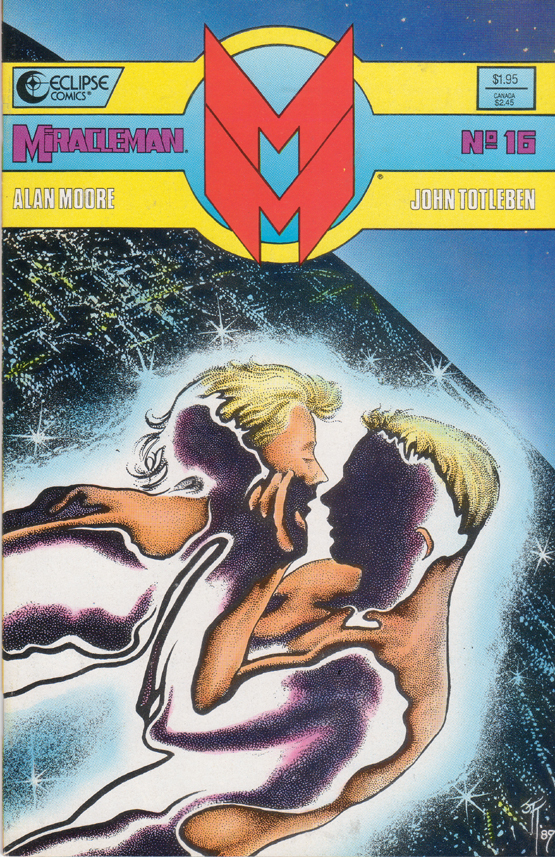Prior to the bankruptcy of Pacific Comics in 1984, Quality Communications had just inked a deal with the Californian publisher for a colorized repackaging of “Warrior’s” Marvelman material in the United States. Shortly after, rival Golden State publisher Eclipse Comics negotiated with the Schanes brothers (Pacific’s owners) to save and acquire a great number Pacific titles, including the deal for Marvelman.
Although Eclipse Comics never had the market share and power of the Big Two (DC and Marvel), the company offered its talent room for creator ownership and freedom from censorship. For a progressive superhero like Marvelman, landing within the company started by brothers Dean and Jan Mullaney was seemingly a perfect fit.
Eclipse took such a great interest in the character that they worked out another deal to purchase the Marvelman rights held by Dez Skinn’s Quality Communication and Garry Leach – this technically made the publisher the majority shareholder (2/3 of the ownership) with Alan Moore owning the remaining third of the character. Unlike Pacific’s plan to simply reprint, Eclipse envisioned the character being a perennial favorite that could become a company staple for years to come. Having had his first opus halted in “Warrior” the year prior, Alan Moore enthusiastically returned to his pen and finished the rest of the story he had planned. Lastly, to avoid a potential skirmish with Marvel’s litigious legal team, Marvelman was rechristened Miracleman.
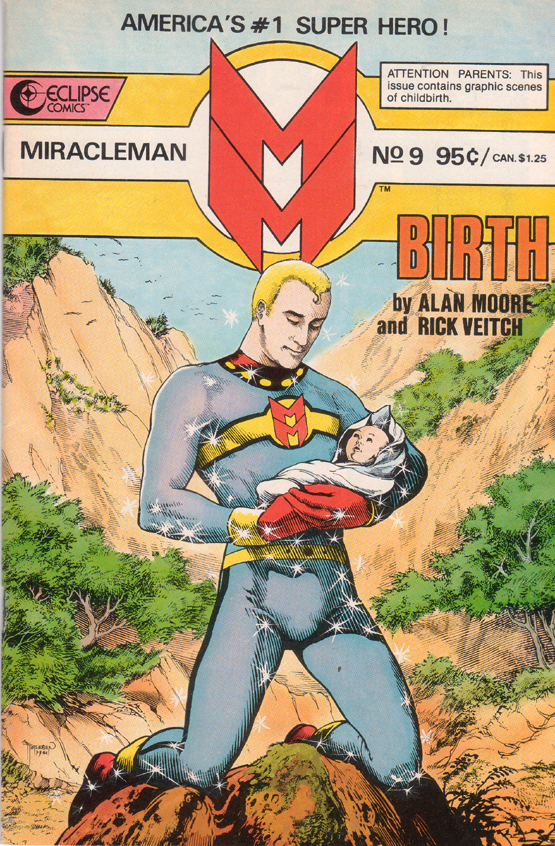
In the new edition of “Kimota!,” Eclipse publisher Dean Mullaney explained, “None of us thought of Miracleman as mainstream. This may be hard for today’s fans to understand, but in those pre-graphic novels-are-mainstream days, what Alan and then Neil (Gaiman) were doing with Miracleman was out of the mainstream. In fact, when we published the birth scene in Miracleman #9, it became one of the most boycotted comics of all time. Besides the point, I never had any interest in going ‘mainstream.’ All I cared about was producing good books and comics. Except for the first two issues, in the rare months when Miracleman was actually published, it was never the top seller we had. Airboy, Scout, the manga line, the Clive Barker graphic novels, and other titles were bringing in the dough. In terms of profit, The Hobbit was the all-time champ, selling over 400,000 copies in various editions.”
With much pomp and circumstance (and heavy promotion), Miracleman #1 debuted strong in 1985 to the tune of over 100,000 copies in sales—it also didn’t hurt that Alan Moore’s popularity was already on a massive upswing as proven by the frenzy from his very successful appearance at that year’s Comic-Con. Issues one to (a chunk of) issue six reprinted the former Marvelman content from “Warrior”—(Side note: Although Alan Davis retained the rights to his MM artwork and creations, he’s stated that he never received any payment for the Eclipse reprints). Within issue #6, production of new Miracleman adventures began when American artist Chuck Beckum (now named Chuck Austen) took the reins for a couple of installments. Issues #9 and #10 would be penciled by frequent Moore collaborator Rick Veitch, and would finally complete “The Red King Syndrome” saga.
The story entitled “Scenes from the Nativity” (Miracleman #9) deserves a notable mention, because this comic features the graphic childbirth of Winter, the daughter of Miracleman and Liz Moran (Mike Moran’s wife). In the original edition of Kimota!, Eclipse’s Editor-in-Chief Cat Yronwode recalled the issue, “That was a situation for which I really wasn’t prepared, having been a child of beatniks and living on farm communes where animals were born all the time. I just wasn’t aware of how hypocritical people were. So I, in anger, decided that because at the time there was a lot of stuff about the Surgeon General’s report against cigarette smoking, I would put on a warning label that would be in the same typeface and size as the cigarette-warning label. And this would be a warning label.”
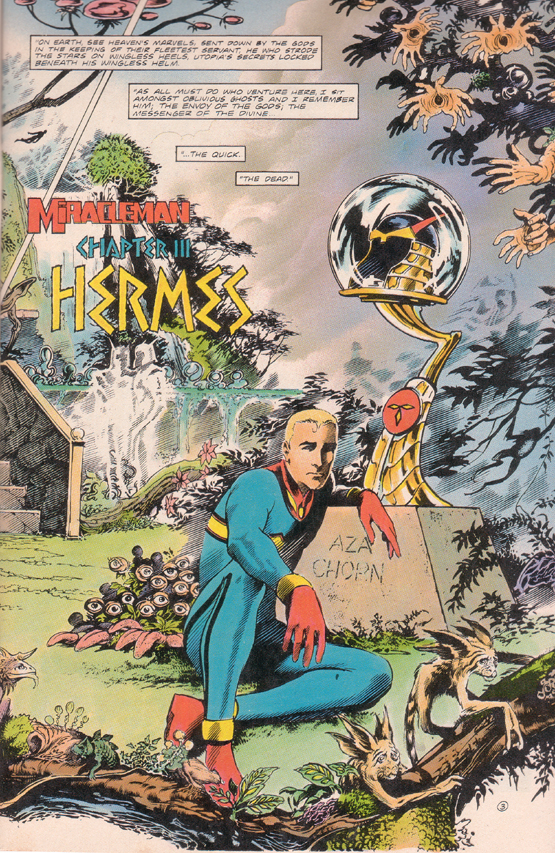
Let’s change gears, right here. The history stuff is all fine and dandy, but I must confess that the reason I love the entire Miracleman saga (and probably still care about comics to this day) is Alan Moore’s third and final Miracleman book: “Olympus.” This is the book (consisting of Miracleman issues #11 through #16) that makes the entire Miracleman series (including Gaiman & Buckingham’s subsequent Golden Age) relevant by holding it all together. This is superhero storytelling at its absolute finest! A much more organic tale than the well calculated and polished machine that is Watchmen.
Unlike other superheroes, Miracleman (a.k.a. Mike Moran) doesn’t start as a typical hero just out fighting injustice or trying to save the world. Having lived an extremely ordinary and underachieving existence as a struggling journalist, Mike Moran becomes a superhero that’s reawakened from a long slumber when he remembers his one magic word, and becomes his true self in the persona of Miracleman. He quickly encounters evil in the now adult Kid Miracleman (Johnny Bates), his one-time child sidekick, who’s used his powers and advantages to carve a financial empire for himself. As the story unfolds, Miracleman discovers that his entire world was created in lies fabricated by his own government and the heartless architect of it all, Dr. Gargunza. The realization of discovering the truth about himself in these prior books (“Dream of Flying” and “Red King Syndrome”) leads into “Olympus,” where seemingly everything in his personal world comes crashing down just as he tries to put it all together for the benefit of mankind.
A significant aspect to what makes “Olympus” work is the majestic art of John Totleben in this arc. Its sheer power in presentation, scope and atmosphere is one of those rare artistic outings where a superhero tale gets every ounce of commitment and inventiveness (and heart and soul) from a true artist, possibly producing the finest artwork and visual storytelling of his stellar career. To explain this story is to do it injustice; it just gets in the way of the reading experience. “Olympus” needs to be read. You need to see for yourself what happens when a superhero isn’t restrained by corporate greed or continuity, but just pushed to its fullest dramatic possibilities. Moore really leaves no stone unturned.
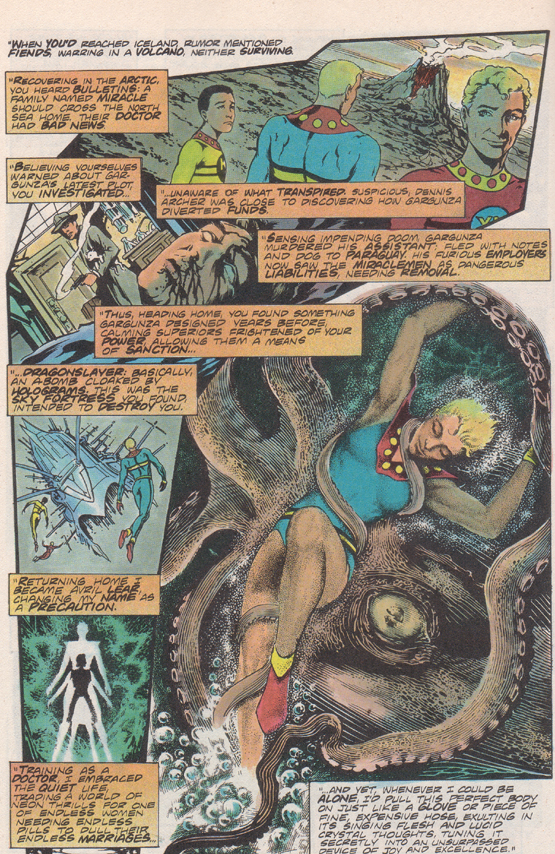
The inevitable final showdown between Kid Miracleman and Miracleman is another of those true milestones in comics. It’s a horrifying sequence that’s violent, vulgar, and bloody cold. It’s a destructive battle that doesn’t hold back in showing readers that a real-life superhero battle would not be a pretty sight—the needless slaughter of London’s civilians in the story serves as a painful reminder to that. The closing heart-wrenching sequence where Miracleman kills his one-time protégé hits you in the gut on so many levels. But after the storm, bloom and tragedy, Olympus springs into a true utopia in the end, one created by a Miracleman that’s still conflicted with the moral lessons that life has dealt him.
Upon proudly looking back at his work on Miracleman, Alan Moore stated to me, “To some degree you can see ideas that began in Miracleman eventually reaching a kind of fruition in Watchmen, where Watchmen was the kind of basic idea of Miracleman, applying real world logic to a superhero, just taken to a greater extreme. Apply real world logic to a superhero world, then see what happens. So yeah, Marvelman was a breakthrough. It was one of the first times that I realized that some of the stories that I wanted to tell would actually work, that you could do them and they’d be entertaining and powerful stories, and they might even be more entertaining than the stories that I was reading at the time. In terms of finding a voice, Miracleman was a very big early step towards that, so I should never underestimate its importance in my body of work.”
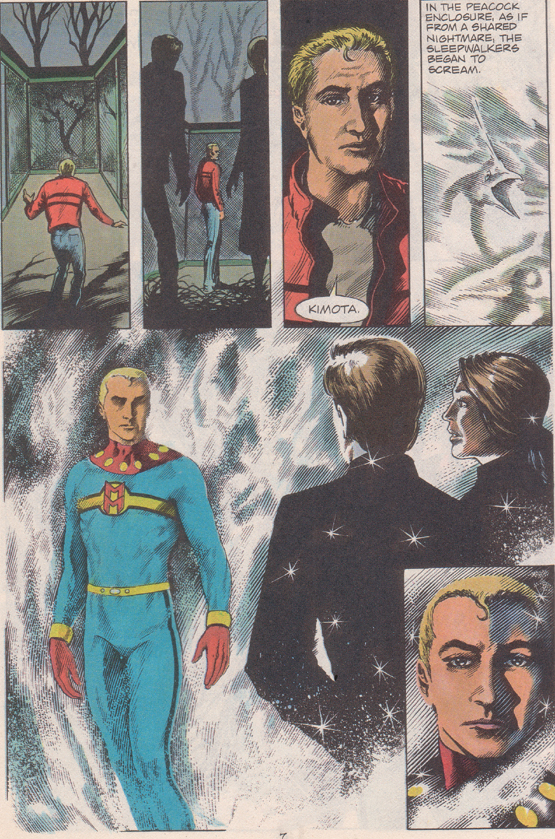
In 1989, nearly seven years after it started, the party was over with the release of Miracleman #16. After various editorial struggles and other creative hurdles, the Miracleman story was now complete. One of the cheesiest characters ever created became the protagonist of the greatest superhero yarn ever told. With that said, you’d think that no one in their right mind would want to follow such a performance…
Well, if so, you’d be wrong. There was a young writing and penciling team eager to accept the challenge of continuing from the apparent bliss set in place within the influential “Olympus.”
Next time, the final installment: The Golden Slumber.
George Khoury is the author of the upcoming brand-new edition of Kimota! The Miracleman Companion, The Extraordinary Works of Alan Moore and more.










